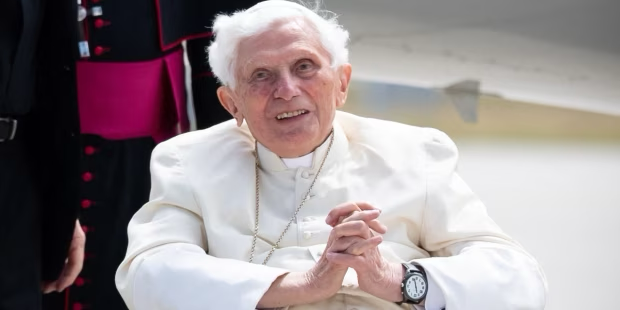Benedict XVI
-
What is the problem with the Mass of Paul VI?
More than fifty years ago, the Catholic Church adopted a new Mass that broke with Church tradition in an unprecedented way. The reformers, however, had not anticipated that the traditional Mass would outlive them. They were even convinced of the opposite. And they used every means at their disposal to... Continue reading
-
Letter to Pope Francis regarding the Mass
Preamble This letter to Pope Francis was first written for The Roman Way 1 to bear witness to the beauty and efficacy of the traditional Roman rite and to bear witness to the shock caused by the motu proprio, Traditionis custodes, published on July 16, 2021 by Pope Francis. Holy Father, I was extricating myself from a terrible Continue reading
-
Benedict XVI in Paradise!

—Is it morning or evening? My breath stopped, then started again. As if it were giving signs of a defect. It was leaving me. The pneuma was leaving me. I breathed that I was ready. My God, how I love it! But, the breath returned, as if it had gone out on an errand. The memores is out. Continue reading
-
The abandonment of Benedict XVI
"Eli, Eli lama sabachthani?" 1 When Benedict XVI signifies, in a few simple words, that he is renouncing the office of Pope, it is an earthquake that shakes the world and strikes Catholics. The most outlandish rumors are circulating and everyone is wondering about the causes of this decision which, even if it Continue reading
-
Priest "Generation Benoit XVI"
Dear Father, It is with great pleasure that I bid you farewell. Not because I am happy that you are leaving the Chapel of Our Lady of the Lily, but because I am happy to have met you and that you are continuing your priesthood by showing the example of the priest according to Benedict XVI. Yesterday, for the feast of the Continue reading